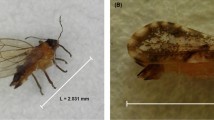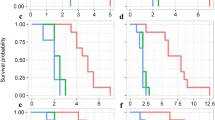Abstract
DAS1 recently compiled a list of insect and mite pests of the two cultivated species of jute, namely, Corchorus capsularis and Corchorus olitorius. A pest, hitherto unrecorded in India, was detected in olitorius jute during 1949 on the farm of the Jute Agricultural Research Institute, and was identified by the Commonwealth Institute of Entomology, London, as Nupserha bicolor Thoms., subsp. postbrunnea Breun. The pest has since been found to be an important one for all the varieties of C. olitorius, while the capsularis varieties show resistance to it.
This is a preview of subscription content, access via your institution
Access options
Subscribe to this journal
Receive 51 print issues and online access
$199.00 per year
only $3.90 per issue
Buy this article
- Purchase on Springer Link
- Instant access to full article PDF
Prices may be subject to local taxes which are calculated during checkout
Similar content being viewed by others
References
Das, G. M., Sci. and Cult., 14, 5 (1948).
Author information
Authors and Affiliations
Rights and permissions
About this article
Cite this article
DUTT, N. Nupserha bicolor Thoms., subsp. Postbrunnea Breun.: a New Pest on Jute (Corchorus olitorius Linn.). Nature 170, 287–288 (1952). https://doi.org/10.1038/170287b0
Issue Date:
DOI: https://doi.org/10.1038/170287b0
This article is cited by
-
Jute — world’s foremost bast fibre, II. Technology, marketing, production and utilization
Economic Botany (1956)
Comments
By submitting a comment you agree to abide by our Terms and Community Guidelines. If you find something abusive or that does not comply with our terms or guidelines please flag it as inappropriate.



